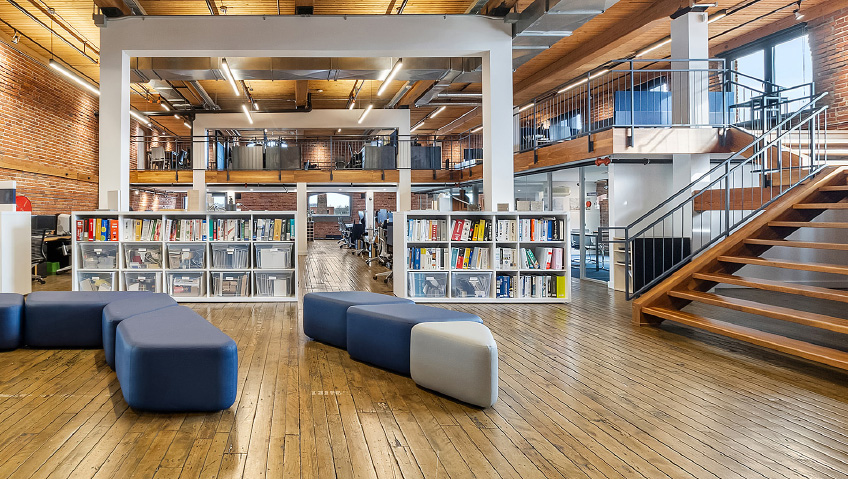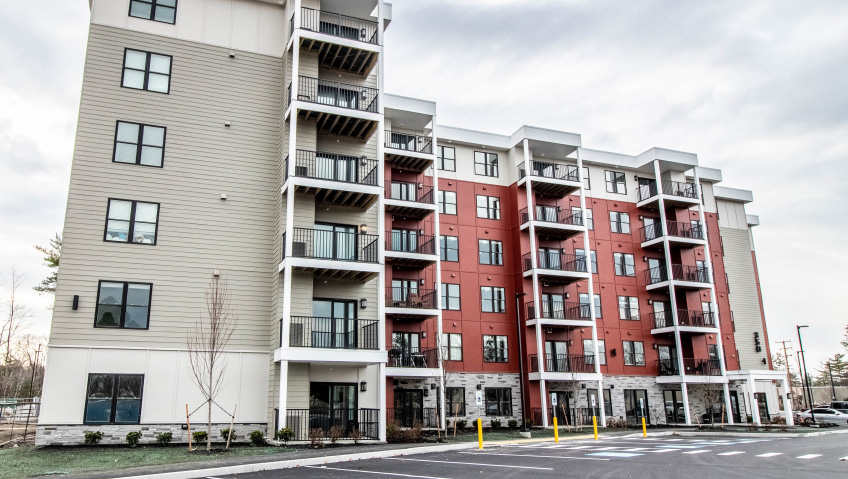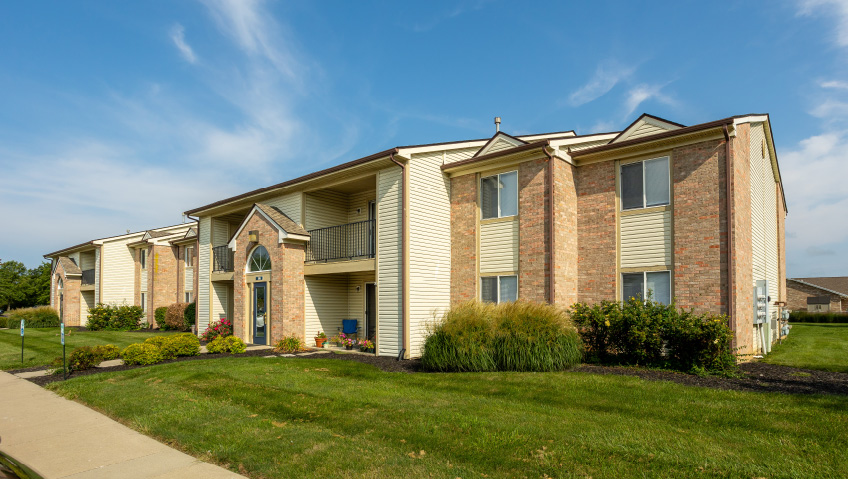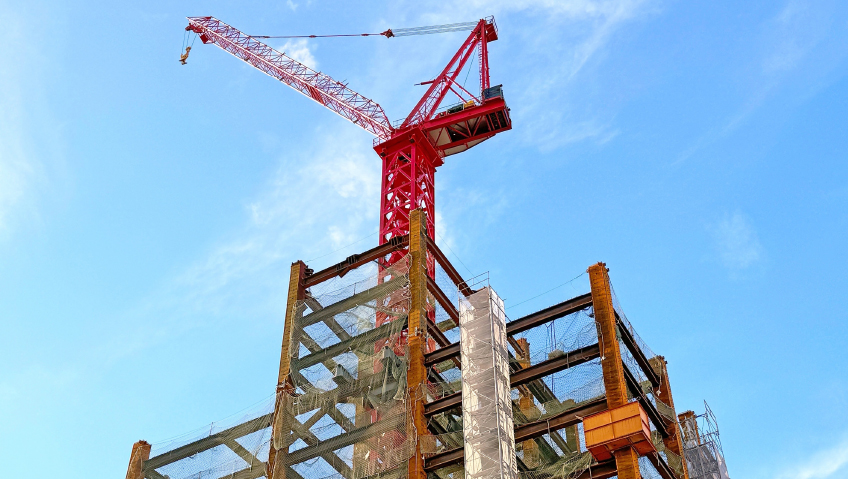When Axis Construction of Hauppauge, New York—widely recognized as an innovator in construction, design, and management services—and MODLOGIQ of New Holland, Pennsylvania—which creates complex, permanent modular structures—work together, they achieve stellar results…
Recently we had the pleasure of catching up with John Buongiorno, Director of Axis Construction’s Modular Division, and Jim Gabriel, President, CEO, and owner of MODLOGIQ. Axis has extended its work into Massachusetts and other New England states, “so we’re no longer only a New York company,” says Buongiorno. Gabriel, meanwhile, has increased his company’s modular-building capacity with the opening of MODLOGIQ-Seville in Seville, Ohio.
Both men, who sit on the Board of Directors of the Modular Building Institute, with Buongiorno serving as Vice President, are firm believers in the potential of modular construction to positively impact the construction industry and outcomes for end users across North America.
According to Buongiorno, the industry generally is experiencing tremendous growth in the number of projects currently under construction and the increased interest in learning what the modular delivery method can bring to projects in all sectors—from health care and education to hospitality and multi-family housing.
At the 2023 World of Modular Annual Convention & Trade Show (where Axis received a “First Place for Relocatable Assembly over 10,000 square feet” for the two-story, 13,000-square-foot crew quarters for the Portsmouth Naval Shipyard, and where MOGLOGIQ received several awards), there was record attendance, with government regulatory agencies looking into how modular construction can be adopted for future building projects.
There are good reasons for this strong interest in modular building, including schedule acceleration, cost certainties, and minimal site impact. With labor shortages, contractors are often unable to find skilled trades for local projects and may face weather conditions that force on-site work to halt, while modular construction within a factory environment can continue unabated.
A modular project can be completed efficiently and cost-effectively when work schedules are synchronized so that the site is prepared to accept the modules upon arrival. These are usually 80 to 90 percent complete, with HVAC and MEP systems, doors, and windows in place, and interiors painted. With excess materials being recycled at the factory, site cleanup is minimal.
Modular additions to existing buildings, meanwhile, bring the added benefit that the existing building—often a hospital or school—can continue to operate with no disruption to patient care or student learning. Because of the adaptable nature of modular building, a hybrid model can also be employed. For example, a large open space in a school, such as a gymnasium, can be constructed using conventional means, while modular units—classrooms, laboratories, library, and offices—can be assembled around it.
But the benefits of modular construction are only fully realized when a crucial part is in place, namely a longstanding relationship built on trust and respect between the principals of the modular company and the on-site construction company.
Not only does the on-site construction company have to prepare the site, but there is also the matter of orchestrating some complex logistics. The planning of transportation routes and getting permission to cross state borders, establishing staging areas, and coordinating with crane crews to complete installation of the modules all have to be in place before the building can be zipped up. These are all things Buongiorno oversees.
“The secret of our partnership is the longstanding relationship and friendship that developed over the years,” says Gabriel. “It’s about knowing exactly who’s doing what; we have a template and a scope of work that is clearly defined as to who does what. The hand-off is like a relay race in the Olympics because we have perfected the communication.”
Adds Buongiorno, “We each understand what the other can do, we watch each other’s back and most importantly, we watch the client’s back, because the most important thing we do is satisfy the client and make each project successful. This is our goal because in turn it will create more success for the modular industry.”
He says that if a client approaches a company and asks, ‘Can you do this?’ that’s not the question they should be asking, because of course the team will say they can. The question clients should ask is, ‘Have you done this?’ And in the case of Axis and MODLOGIQ, the answer is, ‘Yes. Successfully. And multiple times.’
Buongiorno recalls the pediatric addition the team completed during the pandemic for the Good Samaritan University Hospital on Long Island. “We broke ground on the first week of March 2020 and the next week was the week the world changed and came to a screeching halt when businesses shut down,” he shares.
“But because the project was [in] health care, we were under pressure to expedite it and we needed Jim to get his factory opened. He had to get government officials in Pennsylvania involved and petition them, and we got letters sent from New York officials, saying it was an essential project.”
Gabriel agrees it was challenging, “but the reality is that working together to overcome difficulties is what we do, and we were able to fabricate the building on time and have it ready to deliver by the second week of April. It was fully approved, and patients were in those beds before July 4.”
Although it was used as an emergency treatment center for COVID patients, the 6,500-square-foot, $8.9 million facility—the first in Good Samaritan’s history to be built using off-site, modular construction—has reverted to its intended purpose as a pediatric emergency department designed to accommodate children’s special needs. In 2021 it received two awards of distinction: Best in Show and First Place – Health Care from the Modular Building Institute.
The schedule acceleration that results from modular construction is nothing short of remarkable. We checked out a video on the Axis website and were able to watch the installation of a 6,900-square-foot emergency room addition lifted into place by a crane at Beth Israel Deaconess Hospital in Plymouth, Massachusetts, which began on June 26, 2023 and was completed just four days later, on June 29.
Just one month later, on July 26, there was a ground-breaking ceremony for a 4,000-square-foot expansion at St. Charles Hospital on Long Island which will provide a separate care environment offering specialized care for dependency patients. Meanwhile, last year in December, the staff at MODLOGIQ began design work for The Memorial Health System on a four-story, 100,000-square-foot medical center in Athens, Ohio. When completed, this will be the largest permanent healthcare facility in North America built with off-site modular construction.
According to Project Manager Fran Bridge, the typical timeframe for conventional, stick-built construction for a facility of this size can be as long as four years; that’s one to two years to design and another two to three years to construct. MODLOGIQ’s schedule, however, calls for the Athens Health Campus to open in just 18 months.
Most recently, MODLOGIQ has secured a contract for a three-story, 30,000-square-foot rehabilitation center at Odyssey House in New York City, specifically geared to help pregnant women recover from substance abuse by offering treatment and a safe place to live, both before and after the baby is born. The center is just one more example of how the modular industry is responding quickly to the nation’s critical healthcare needs.
“In recent years, we spent considerable time looking at how we could increase our capacity, both internally and externally, and how could we do more and do it faster,” Gabriel explains. “One way we discovered would be to produce cold formed [light gauge] steel, the metal studs, and the panels that infill every single one of our structural modules. Now, through the acquisition of a plant in Seville, Ohio, southwest of Akron, we have the ability to do this,” he shares.
“We had been talking to the former owner of that facility about being the supplier for the Athens project, and those conversations turned into a question of whether we might be interested in acquiring the facility, leasing the equipment—which includes five Howick machines, the leading technology for producing cold formed steel—and hiring the existing staff, so no jobs were lost. It was not a planned acquisition, but it’s come together under the MODLOGIC name as a separate entity, MODLOGIC–Seville,” says Gabriel.
“That facility will be producing a different kind of product that could be integrated into John’s projects, and we’ll collaborate with him and his team to supply metal studs, preformed wall panels, and other structural components to help him solve problems for his clients and increase revenues.”
The other development Gabriel says his staff has been working on is DESIGNLOGIQ, a design philosophy and platform for modular manufacturing assembly and construction. “It’s our version of DMA [Design for Manufacturing and Assembly] but we believe DMA doesn’t take it far enough to include every detail that’s important when considering a modular product.”
The purpose of DESIGNLOGIQ is not to design only for MODLOGIQ but for anyone with an interest in leveraging modular construction and pre-fabrication to reach its full potential. “We believe it will lead to an increase in the volume of manufacturing capacity across the board and already we’re working on projects at our facility for other modular manufacturers,” Gabriel shares.
Often, developers go to an architect first, who may not know how to design for modular construction, and when that happens, they face increased design time and higher costs once the plans are brought to the factory. Instead, what Gabriel recommends is making the architect of record part of the design team at MODLOGIQ who can bring all the components for customized buildings together seamlessly. This way, the modular manufacturing company, wherever it is located, can produce a successful outcome.
“Everyone wants to try modular construction because of the obvious advantages, but they just don’t know how,” he says. “Our goal is to lead modular manufacturers and developers down the right path. Our goal isn’t to try and get all the work; it’s to facilitate work and benefit the entire industry across North America.






